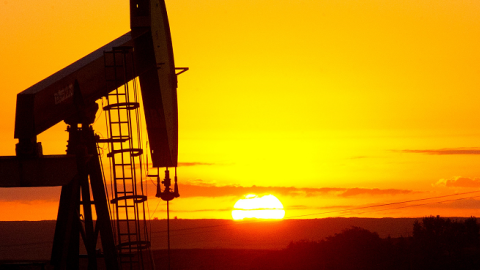Bloomberg reported Monday that U.S. crude oil production hit 11 million barrels a day during the first quarter of this year, beating both Saudi Arabia and Russia.
In fact, it looks like America is going to remain the world's top oil producer for the rest of 2014. The federal International Energy Agency has already predicted that America will replace the Saudis as the world's biggest oil producing country by 2020.
This begs a question. Why does this nation still have a Strategic Petroleum Reserve? Maybe it's time for this relic of Carter-era energy policy to get the heave-ho in the face of the realities of America's new era of energy -- and oil -- abundance.
The SPR was created in 1975 after an Arab oil embargo of the U.S. two years earlier quadrupled oil prices, and sent people pushing their cars to gas stations as refineries shut down and supplies dried up.
The idea was for the government to stockpile a 30-day supply of crude oil to get the U.S. through another cutoff. By then, the thinking went, either the oil companies will have negotiated a new deal with OPEC -- or the Marines will have occupied the Saudi oil fields.
In any case, a massive storage facility was set up in a series of salt caves along the Gulf Coast and close to oil refineries for keeping some 500-700 million barrels of crude oil.
It costs about $21 million year to maintain the SPR, while the Department of Energy is authorized to spend roughly $100 million a year to keep the tank topped when drawdowns occur.
Since 1975, presidents have dipped into the SPR to cushion consumers against high heating oil bills (Clinton in 2000) and when Hurricane Katrina shut down oil refineries on the Gulf Coast (Bush in 2005). Most recently, President Obama ordered some released to ease world prices during the turmoil in Libya in 2011, and again during the crisis in Ukraine.
Otherwise, the real reason this massive stockpile was set up, to cushion the country against a cutoff of Middle East oil, has been invoked exactly once in nearly 40 years, during the First Gulf War. At that time a grand total of 17 million barrels was sold off, or not much more than a day's worth of supply for the United States.
That doesn’t suggest it halted an economic Armageddon.
Don't forget when Hurricane Katrina hit, America imported almost 60 percent of the oil required to keep the economy going. Today, that number has slipped back to 45%, most of which comes from Canada and Mexico.
Meanwhile, the reserve itself has grown to more than 700 million barrels. At current prices, that’s almost $77 billion of oil waiting for a crisis that isn’t coming as long as U.S. wells continue to produce and our imports remain on the same downward trajectory.
In short, draining the SPR is an idea whose time has come. Oil man T. Boone Pickens was one of the first people to realize it’s time to rethink the reserve. His option of selling off half while keeping half in case of another weather-related disaster like Hurricane Katrina makes sense.
Another option would be to rethink the term “strategic” reserve. By selling from the reserve during crucial spikes in oil prices, and then offering to export reserve oil to allies like Japan in case of a major crisis in the Persian Gulf, America can both help to stabilize world prices and enhance U.S. clout as the world’s emerging energy superpower.
A third option would be to simply drain the reserve and sell it all on the open market. Since the average price per barrel in the reserve is around $28, that would be a windfall profit for the Department of Energy of sizable proportions, not to mention official recognition of the fact that a government program set up 39 years ago to deal with a problem that no longer exists needs to be shut down.
Who knows, it might even start a trend.
Honest debate can be held on whether the government should be in the business of stockpiling commodities at all, no matter how strategic, since it only helps to artificially drive up prices and misdirect supplies.
But no one can argue that the idea of the world’s number-one oil producer stockpiling oil could only make sense in Washington, or that it’s time to give this multi-billion dollar boondoggle some serious scrutiny.
















